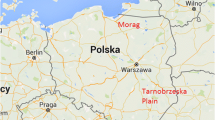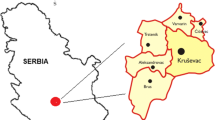Abstract
The arsenic contents of 162 fruit body samples of 37 common edible mushroom taxa were analyzed. The samples were gathered from different habitats of Hungary (mainly from mountains) between 1984 and 1999. The arsenic content of the samples was measured by the inductively coupled plasma spectrometry method. Very low [lower than 0.05 mg/kg dry matter (DM)] concentrations were found in the samples of 13 taxa, while higher (or very high) contents were quantified in other common taxa (the highest arsenic content was recorded in the fruit body of Laccaria amethysthea at 146.9 mg/kg DM). The species of eight genera (Agaricus, Calvatia, Collybia, Laccaria, Langermannia, Lepista, Lycoperdon, Macrolepiota) belong to the so-called accumulating taxa, and this tendency is evident on all habitats. This arsenic accumulation capability is found in two orders of Basidiomycetes (Agaricales and Gasteromycetales), which is to say this phenomenon occurs in the families Agaricaceae, Tricholomataceae and Gasteromycetaceae. The accumulating taxa found all have a saprotrophic type of nutrition; arsenic accumulation is not detectable in xilophagous or in mycorrhizal species. The consumption of the accumulating species found has only a low toxicological risk for three reasons: the consumed fresh fruit bodies contain about a tenfold lower arsenic level than the dried ones, the majority of arsenic occurs not in poisonous inorganic, but in less dangerous (or not poisonous) organic forms, and the frequency of consumption is low.
Similar content being viewed by others
References
Byrne AR, Ravnik A, Kosta L (1976) Sci Total Environ 6:65–78
Demirbas A (2001) Food Chem 75:453–357
Vetter J (1994) Toxicon 32:11–15
Stijve T (2001) Bull Trimest Fed Mycol Dauphine Savoie 160:39–47
Haldimann M, Bajo C, Haller T, Venner T, Zimmerli B (1995) Mitt Geb Lebensmittelunters Hyg 86:463–484
IARC (1987) IARC Monogr Supp 7:100–106
Slekovec M, Irgolic KJ (1996) Chem Spec Bioavail 8:67–73
Slejkovec Z, Byrne AR, Stijve T, Goessler W, Irgolic KJ (1997) Appl Organomet Chem 11:673–682
Kuehnelt D, Goessler W, Irgolic KJ (1997) Appl Organomet Chem 11:459–470
Byrne AR, Slejkovec Z, Stijve T, Fay L, Gössler W, Gailer J, Irgolic KJ (1995) Appl Organomet Chem 9:305–313
Vetter J (1987) Mikológiai Közlemények, 26:125–150
Vetter J (1989) Int J Mycol Lichenol 4:107–135
Jacquiot L, Daillant O (1998) Bull Observ Mycol 14:2-35
Author information
Authors and Affiliations
Corresponding author
Rights and permissions
About this article
Cite this article
Vetter, J. Arsenic content of some edible mushroom species. Eur Food Res Technol 219, 71–74 (2004). https://doi.org/10.1007/s00217-004-0905-6
Received:
Published:
Issue Date:
DOI: https://doi.org/10.1007/s00217-004-0905-6




